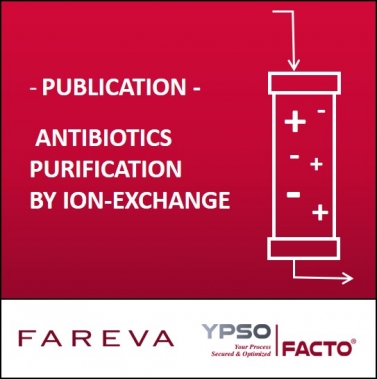Antibiotics purification by ion-exchange
The power of mechanistic modeling and predictive simulation
Lucrèce Nicoud, Karen-Vanessa Gonzalez, Aude Portier, and Roger-Marc Nicoud
Sometimes you have to change a raw material for various reasons (lack of availability, economic pressure, find alternative sustainable raw material), but this little change can impact significantly your process.
In the below article, you’ll see how some well-designed experiments and mechanistic modeling enable a tricky change of raw material in ion-exchange.
Changing the counter-anion on the raw material of this cation exchange process was expected to have very little influence on the separation. Yet, major issues were observed, including the loss of resin capacity.
Method:
To address this challenge, a very complex system of 2 isomers with 6 pKas each was studied, rationalized, and modeled:
- With a set of smart experiments, the physico-chemical phenomena at stakes were understood and key parameters were measured
- The system was represented with a mechanistic ion-exchange model and simulated in our software Ypso-Ionic®.
Results:
A new and efficient operating point was identified thanks to a rational scientific approach. A fully predictive IEX model was established.
This example illustrates the strength of using rigorous ion-exchange models, as opposed to the often-used classical adsorption models, to describe ion-exchange chromatography.
Read the full article here: Using mechanistic modeling for understanding antibiotics purification with ion-exchange chromatography


